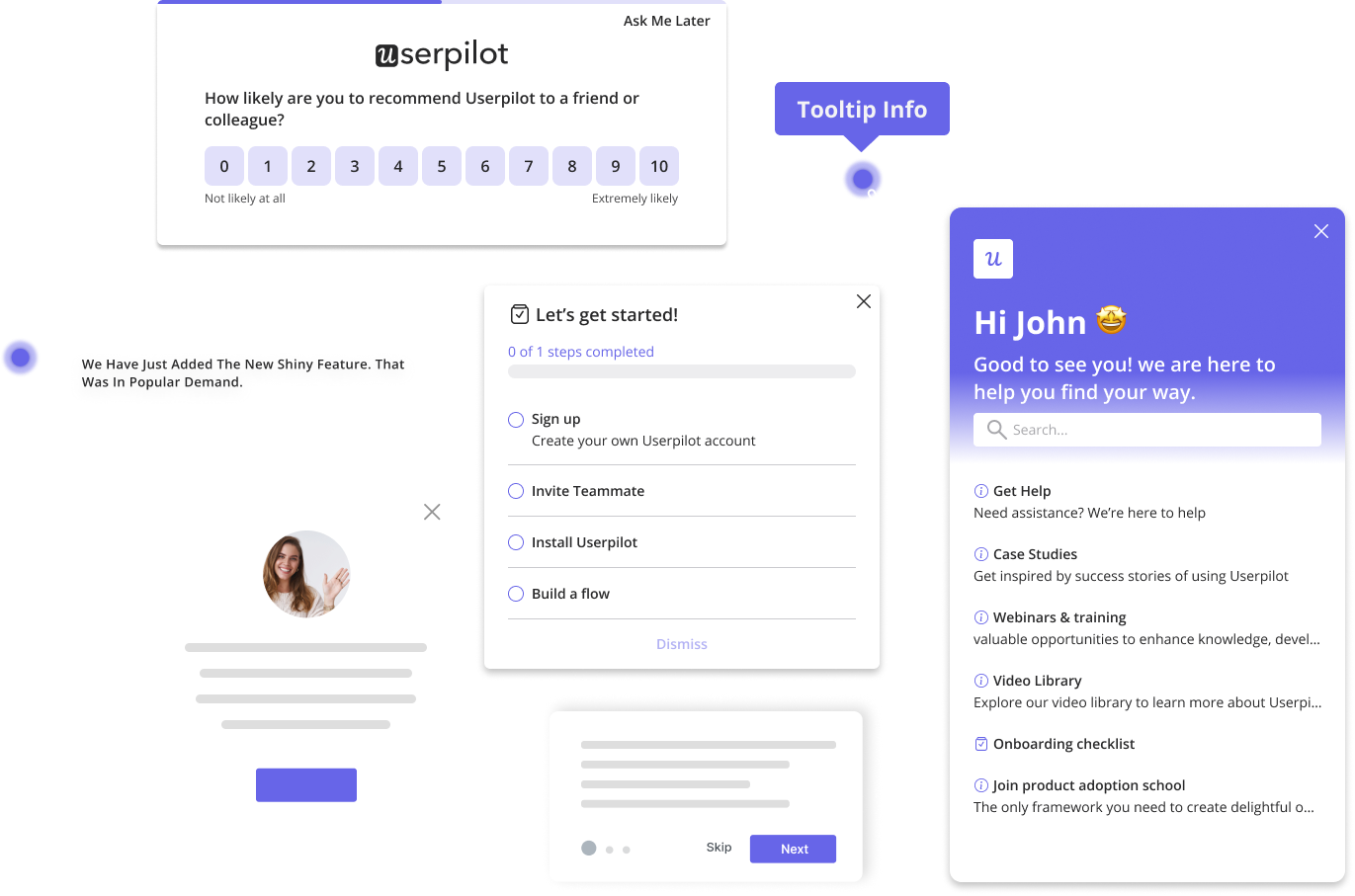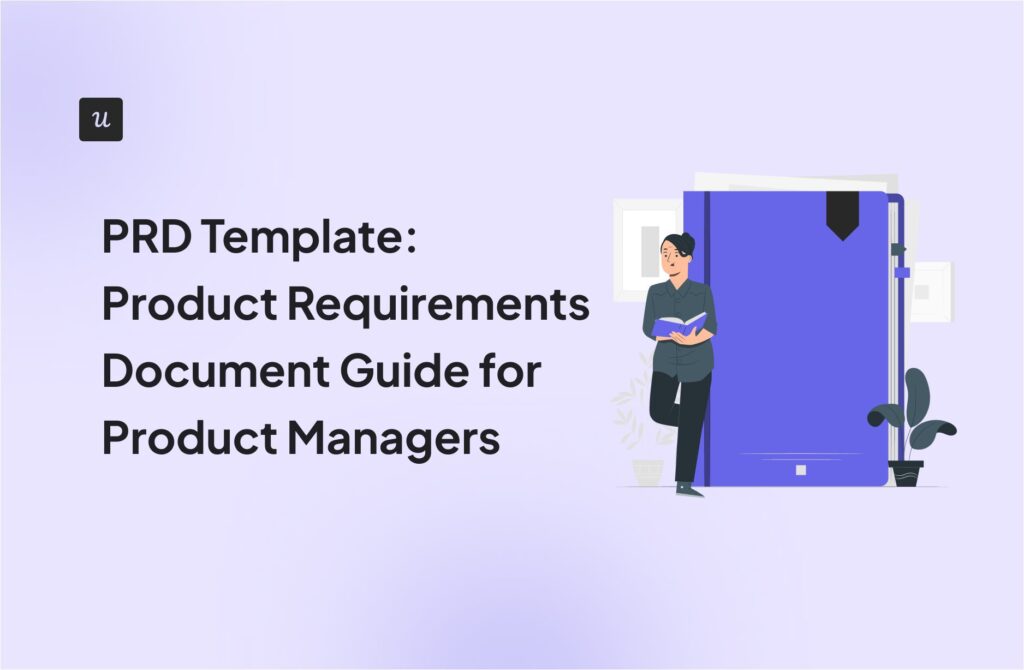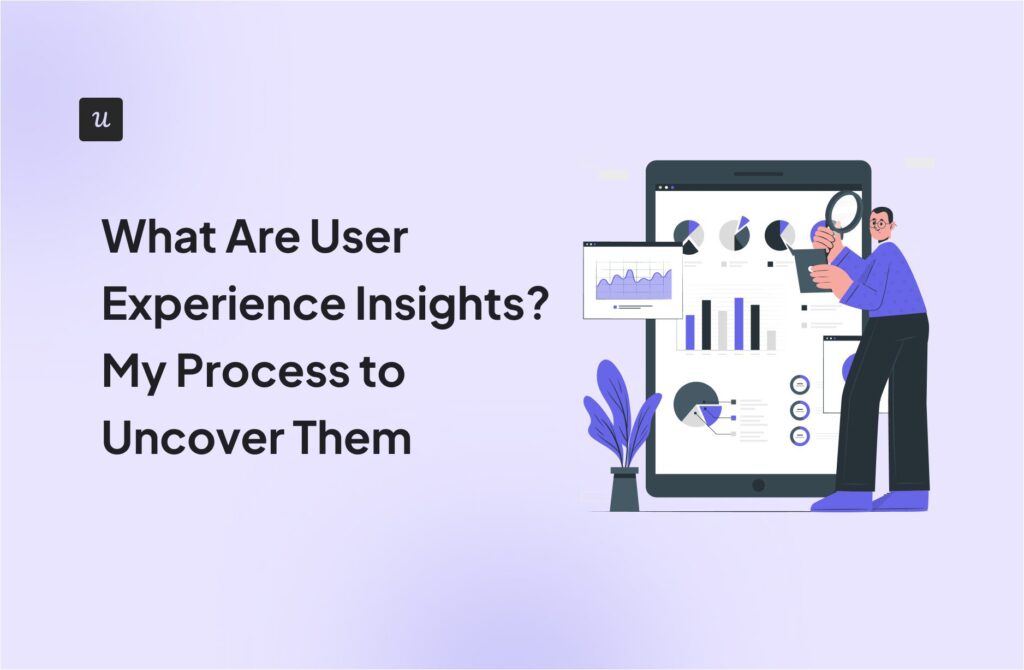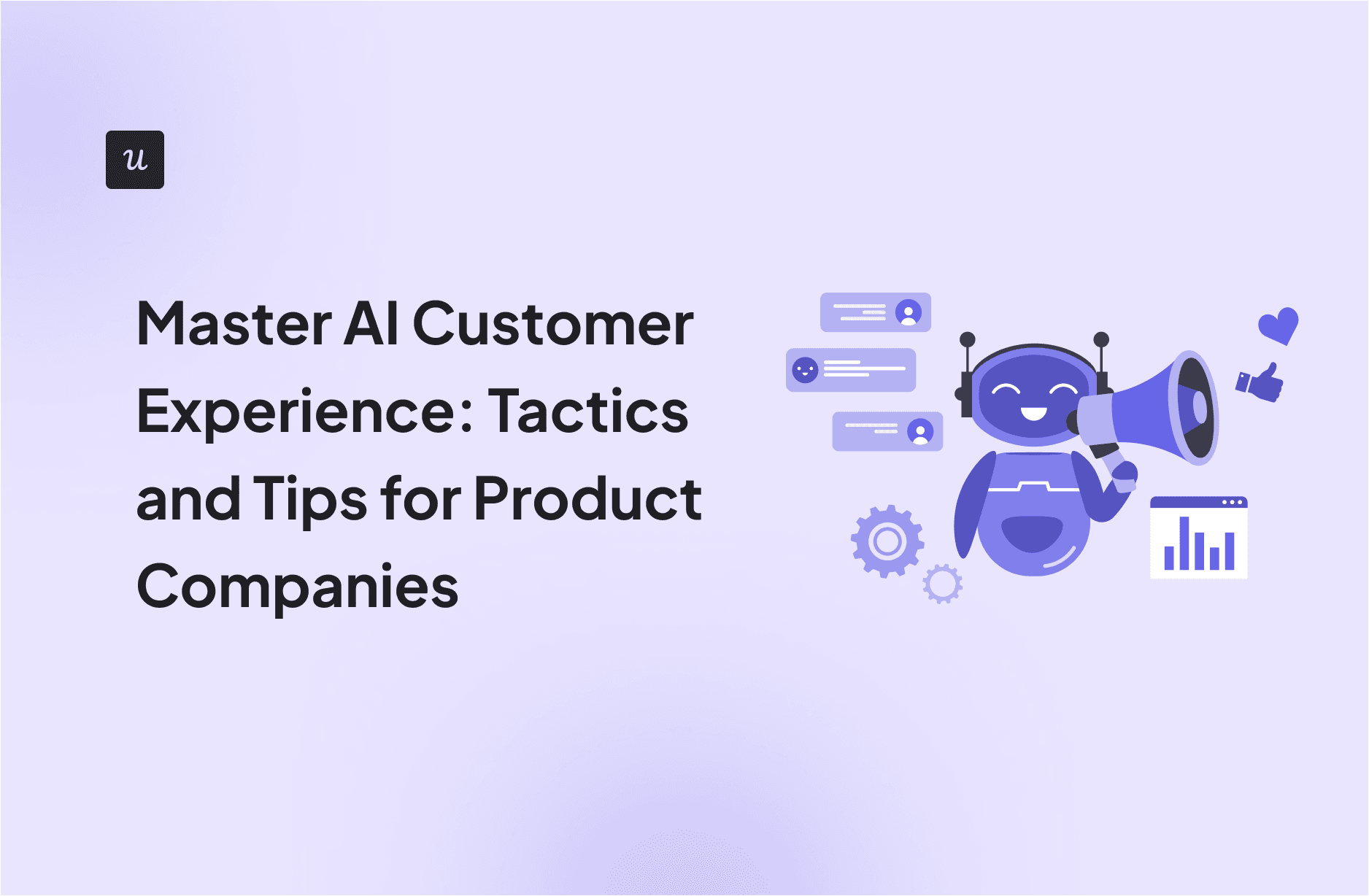
Master AI Customer Experience: Tactics and Tips for Product Companies
In the past few years, AI solutions have bled into any aspect of modern customer experience. However, customer success experts and product managers still struggle with integrating AI customer experience into their existing systems in ways that improve activation and reduce churn. That’s because it’s easy to fall into the trap of chasing the hype instead of searching for solutions that will scale efficiently and last us long term.
That’s why in this article, I’ll share some tips on how to move past the hype and use AI to create CX strategies that last.
What’s the primary goal for improving your AI customer experience?
What’s the biggest friction point in your current user onboarding?
How do you currently encourage feature discovery?
What’s your main challenge with trial users?
How do you currently collect user feedback to inform your roadmap?
It looks like personalizing your onboarding is key.
A better AI customer experience starts with guiding users to value, faster. Userpilot’s AI can help you build contextual, personalized onboarding flows that boost activation and reduce churn.
Driving feature adoption requires the right message at the right time.
Improve your AI customer experience by using behavioral triggers to announce features in-app. Userpilot helps you target the right users, measure adoption, and increase engagement.
Converting more trial users means showing value quickly.
Elevate your AI customer experience by identifying key activation events and guiding trial users through them. Userpilot helps you correlate user behavior with conversions to grow revenue.
Actionable insights are crucial for a better product.
An effective AI customer experience is built on a foundation of solid data. Userpilot empowers you to collect targeted in-app feedback and analyze it with AI to make smarter roadmap decisions.
Try Userpilot Now
See Why 1,000+ Teams Choose Userpilot
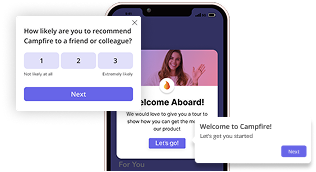
What is AI customer experience?
AI customer experience, or AI CX for short, is the practice of using artificial intelligence tools and technologies to enhance customer interactions. It leverages customer and product data to help teams deliver smoother, more personalized experiences that boost customer satisfaction and loyalty.
While we often discuss AI in CX in the context of customer service, for SaaS companies, it extends far beyond support tickets. A truly great customer experience spans every stage of the customer journey, from onboarding and in-product guidance to proactive communication and even billing touchpoints. That means CX is not the job of one team alone. Product, marketing, sales, and support all share responsibility for shaping an AI-powered experience that feels seamless, intuitive, and human-centered.
Why is AI in customer experience important?
From my experience at Userpilot and in working with our customers, I’ve seen that AI tools are transforming customer experience in the following ways:
- Delivering hyper-personalized experiences: What was once a luxury is now an expectation. Adobe’s 2024 Digital Trends report shows 71% of consumers expect their experience to be personalized and seamless across all channels. McKinsey reports that 76 percent get frustrated when it doesn’t happen. The good news is that AI, through machine learning, natural language processing, and predictive analytics, can help you meet this growing customer need.
- Removing friction points before they happen: AI’s ability to anticipate customer behavior means product teams can spot when someone is likely to get stuck. Then, we can proactively guide users with trigger-based messages or in-app prompts. Combined with a well-designed UI, this creates a seamless experience that reduces drop-offs and drives stronger engagement.
- Analyzing data from multiple sources: SaaS teams often struggle with data silos where support, marketing, and product each rely on separate tools. This fragmentation slows down decision-making and drains productivity. In fact, Forrester’s research shows teams waste up to 30% of their time just searching for the right information. I’ve found that AI can help solve this problem. With the right tools and workflows, you can combine data from multiple sources, quickly analyze millions of data points, and surface insights that lead to faster and better decisions.
- Reduction of operational costs: AI makes it possible to deliver high-quality experiences with fewer resources. Intelligent agents can handle first-line support, resolve common customer issues instantly, and reduce the volume of tickets that reach human teams.
How can AI improve customer experience? 8 use cases and examples
Now that you’ve seen the benefits, let’s discuss eight ways to implement AI in your SaaS processes:
1. Analyze customer data with predictive analytics to eliminate friction and reduce churn
Predictive analytics help you anticipate what the users want before they ask. AI analyzes past customer interactions and real-time activity to spot patterns that indicate when a user is about to encounter a problem or drop off. All of that leads to faster activation, more successful adoption, and lower churn.
Armed with these insights, you can build contextual in-app flows or even make UX design improvements to help customers navigate your product more intuitively.
Userpilot’s Product Growth Agent makes this process actionable. It highlights drop-off points, monitors actual feature adoption, and provides recommendations for the best course of action.
2. Hyper-personalize communication to engage and activate users faster
When collecting data for our latest product metrics report, we found that the average activation rate for PLG companies is 34.6%, which is slightly lower than 41.6% for sales-led organizations.
SLG companies enjoy higher activation rates for an obvious reason: a sales rep is available to tailor the customer’s experience, ensuring they only interact with content and features that match their use case.
AI agents can help replicate a similar experience at scale. By collecting customer data such as jobs-to-be-done, in-app behavior, and preferred communication channels, you can build dynamic onboarding flows that adjust automatically. This means every user will receive the right guidance, at the right time, through the channel that resonates most.
With Userpilot’s AI-powered features, you can receive recommendations for personalized flows that personalize the journey based on the user’s role, progress, or actions. For example, if new users are struggling with a feature and begin dropping off at the same step, the AI agent can flag the issue and instantly suggest or generate a flow to guide them past the hurdle. What’s more, AI can even create a new flow from scratch.
If you’re interested in learning more about AI-driven onboarding, join Kate Syuma’s Product Drive session, where she shares her holistic onboarding framework, including a case study where an AI-assisted onboarding agent doubled activation rates and revealed patterns that actually build trust and momentum.

3. Go omnichannel to ensure cohesive experiences across the customer journey
In-app prompts are powerful, but they need to be reinforced with email for users who have gone quiet, or mobile notifications when that’s the channel they prefer.
AI helps orchestrate these multichannel strategies. It can map user behavior, identify the best channel for each touchpoint, and coordinate timing. This way, messages complement each other instead of repeating. Users always receive relevant, timely prompts that feel like part of a single, connected journey.
A platform like Userpilot lets you manage multichannel communication from a single place. For instance, after building in-app flows, you can track analytics to spot users who didn’t engage or dropped off midway. From there, you can automatically trigger an email nudge or mobile push notification (if you have an app) to re-engage them and guide them back to value.
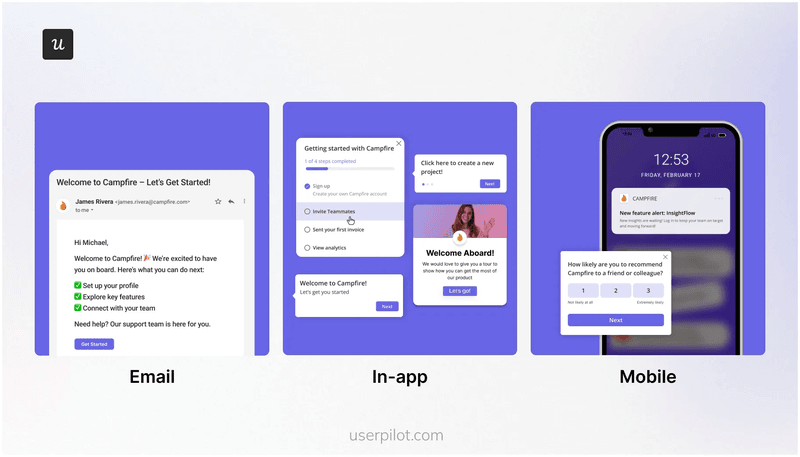
4. Offer multilingual support through content localization
Personalization isn’t only about roles or behaviors; it also extends to geography and language. CSA’s latest Can’t Read, Won’t Buy research involving thousands of consumers shows 65% of people prefer content in their native language, even if it’s poor quality.
Critical assets, such as contracts, legal documents, or complex documentation, should be translated by a human. But AI can step in to save time on shorter content, such as in-app messages, surveys, or resource center materials.
Userpilot makes this simple with AI-powered localization. You can automatically translate in-app flows, checklists, and emails into multiple languages, while still having the option to import human translations when accuracy is critical.
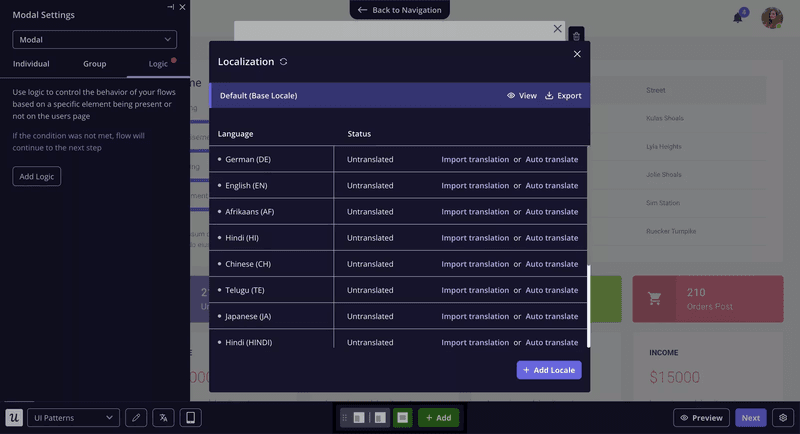
5. Create in-app messages with generative AI
Writing concise, engaging copy for tooltips, modals, and banners takes time and usually more iterations than expected.
When deadlines are tight or you need quick inspiration, generative AI provides a strong starting point that speeds up the process without sacrificing quality.
For example, imagine you’re building an onboarding flow and need it to be live by the end of the day. Userpilot’s AI Assistant can generate a friendly welcome message for first-time users and refine it on the spot, shortening, expanding, or adjusting the tone until it feels right. The same support applies across product guides, surveys, and other in-app experiences, helping you ship faster and still stay on-brand.
6. Automate routine customer service tasks to elevate human support
Let’s face it: most common customer inquiries are repetitive.
Password resets, access issues, billing questions, and basic troubleshooting all consume valuable time and resources. AI is especially effective here. With technologies like natural language processing and machine learning algorithms, it can handle these routine interactions through self-service portals or chatbots that provide instant answers around the clock.
While some worry that automation will replace human agents, I see it differently. AI frees human agents to focus on complex, high-value issues that require empathy, while also improving overall agent performance by reducing repetitive workloads.
For example, Intercom’s Fin AI agent is designed to resolve routine tasks directly in chat, without escalating to a human rep. This function alone can eliminate hundreds or even thousands of support interactions per year.
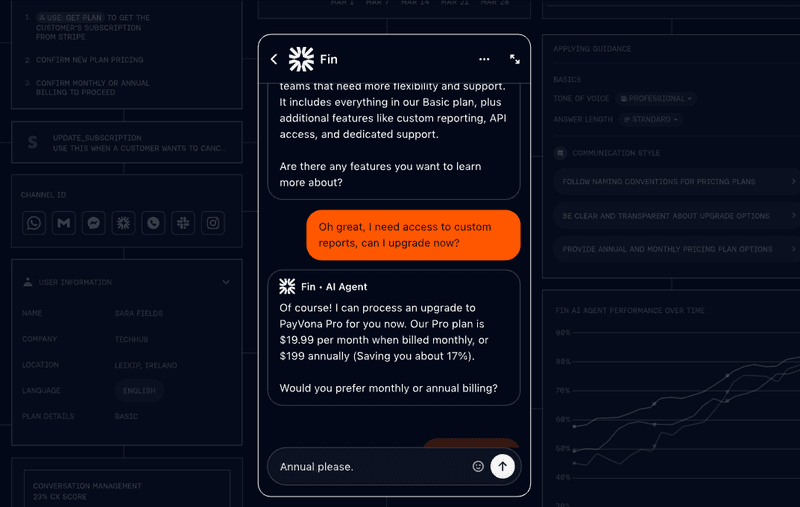
7. Drive self-service support with personalized resource centers
Customers expect immediate solutions to their issues, and most would rather not wait in line to speak to support unless absolutely necessary.
This is where an always available support center comes in. An in-app knowledge base combined with other self-service tools reduces customer frustration and helps users advance faster through your product.
Userpilot’s resource center is a great example of this. It gives users on-demand access to tutorials, FAQs, and product news directly within the app. And if a question isn’t resolved, the system can smoothly hand the user over to a human agent while retaining all the context of their interaction.
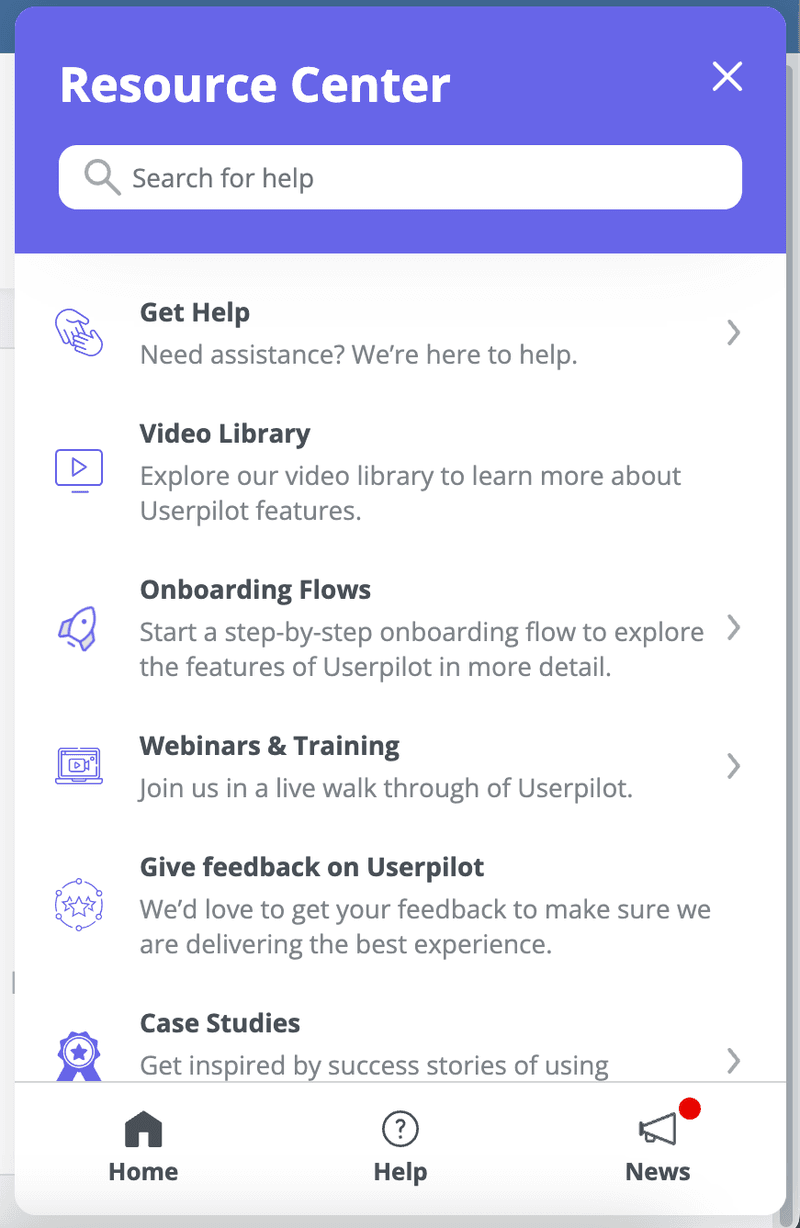
AI can improve your resource center in several ways:
- Smarter search: Help users find the right answers faster through AI-driven search functions.
- Content performance analysis: Identify your best and worst-performing content so you can address gaps and continuously improve resources.
- Interactive AI video content: Give users the option to watch quick, personalized walkthroughs instead of reading articles. As a Userpilot customer, you can easily integrate our tool with the AI video generation platform Synthesia to provide engaging video tutorials at scale.
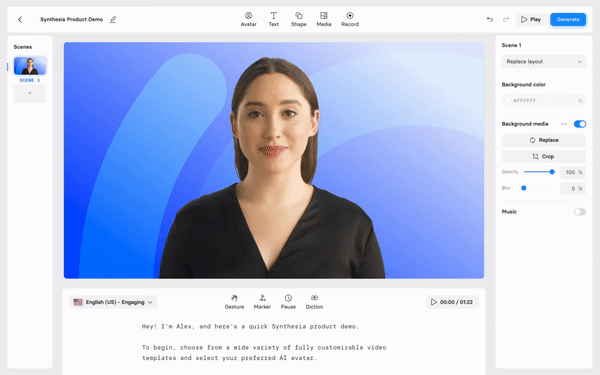
8. Capture actionable feedback and analyze user sentiment
Customer feedback is essential for product improvement, but collecting and analyzing it manually is usually too resource-intensive for smaller teams. Here’s how AI technology and workflow make it easier:
- Deploy targeted in-app surveys: AI tools help you trigger surveys at the most relevant moments based on user segments and behaviors. For example, Userpilot can launch a survey right after someone engages with a new feature and analyze the responses to surface patterns in satisfaction and usability.
- Analyze customer feedback at scale: Whether you’re using NPS, CSAT, or other feedback channels, the true value lies in understanding open-ended responses. With generative AI-powered tools like Userpilot, you can run thematic and sentiment analysis to categorize feedback automatically. This makes it easier to spot recurring pain points and uncover opportunities to convert detractors into promoters.
- Close the loop automatically: Gathering insights is only half the job. AI can also recommend or trigger follow-up actions, such as sending helpful resources to frustrated users or prompting a customer success manager to reach out. This approach ensures feedback actively improves the customer experience and flows back into customer conversations, rather than just sitting in a report.
Best practices for building an AI-powered customer experience strategy
The future of customer experience is deeply intertwined with AI. For product managers like myself, this is not a distant trend; it’s an immediate opportunity to deliver more value and drive growth.
Here’s how I approach building an AI-powered CX strategy:
- Define clear goals: I always start by pinpointing the specific product KPIs I want to influence, whether that’s reducing churn, improving activation, or boosting satisfaction. Clear goals help guide implementation and make it possible to measure the actual impact of AI.
- Start small and iterate: I focus on a single, high-impact pain point and test an AI-powered solution there first. For example, I might begin by using AI to analyze customer insights and streamline reporting, then gradually apply it to generating in-app content and onboarding flows.
- Leverage high-quality data as the foundation: AI is only as good as the data it learns from. That’s why I make sure to capture as much accurate data as possible. Userpilot’s raw event autocapture and the Events dashboard provide me with immediate visibility into user behavior. I then use funnel reports and path analysis to map customer journeys and identify where AI interventions will have the biggest impact.
- Integrate the tech stack: I’ve learned that AI systems shouldn’t exist in silos. That only creates more manual effort, which is exactly what artificial intelligence is meant to minimize. I always look for opportunities to integrate with the existing stack and build smooth workflows that keep data and insights connected.
- Measure and optimize with A/B testing: Finally, I validate every AI-driven CX initiative through testing. With Userpilot’s flow experimentation feature, I can compare AI-powered flows against control groups or other variations to see what works best. I also rely on separate staging and production environments to test safely before rolling out improvements.
Improve customer experience with Userpilot’s AI-powered solutions
The combination of smart AI and thoughtful human-centered design makes it possible to craft truly personalized product experiences that convert users, drive retention, and build lasting customer loyalty.
With Userpilot as your all-in-one product platform, you have all the data you need in one place to create cohesive, data-driven experiences. Our AI continuously learns from that data and evolves into a true co-pilot that supports the entire customer journey, from onboarding to adoption to long-term engagement.
Ready to begin? Book a demo today and see how Userpilot’s AI solutions can help you implement an AI customer experience that scales with your product.
FAQ
What are the benefits of artificial intelligence in customer experience?
AI-powered customer service delivers several advantages that make a real difference for PLG companies:
- Hyper-personalization: AI helps you automatically send the right message, at the right time, through the right channel.
- Operational efficiency: AI automates repetitive tasks like sorting support tickets, routing requests, or drafting responses, ultimately increasing customer satisfaction by reducing resolution times.
- Smarter insights: AI connects the dots across data sources and shows you patterns that would be impossible to catch manually.
- Retention and loyalty: Users are more likely to stick around when they feel seen, supported, and understood. AI tools help create those seamless experiences at scale.
What are the challenges of AI in customer experience?
Despite its benefits, AI comes with a few challenges:
- Data quality and silos: AI is only as good as the data it learns from. Fragmented data or inaccurate inputs lead to poor insights and weak recommendations.
- Risk of over-automation: Too much automation can make experiences feel robotic and impersonal, especially when human empathy is needed.
- Customer trust and transparency: Users may hesitate to engage with AI if it feels intrusive or unclear how their data is being used.
- Implementation costs and complexity: Rolling out AI requires investment in tools, integrations, and training, which can be a barrier for some product teams

